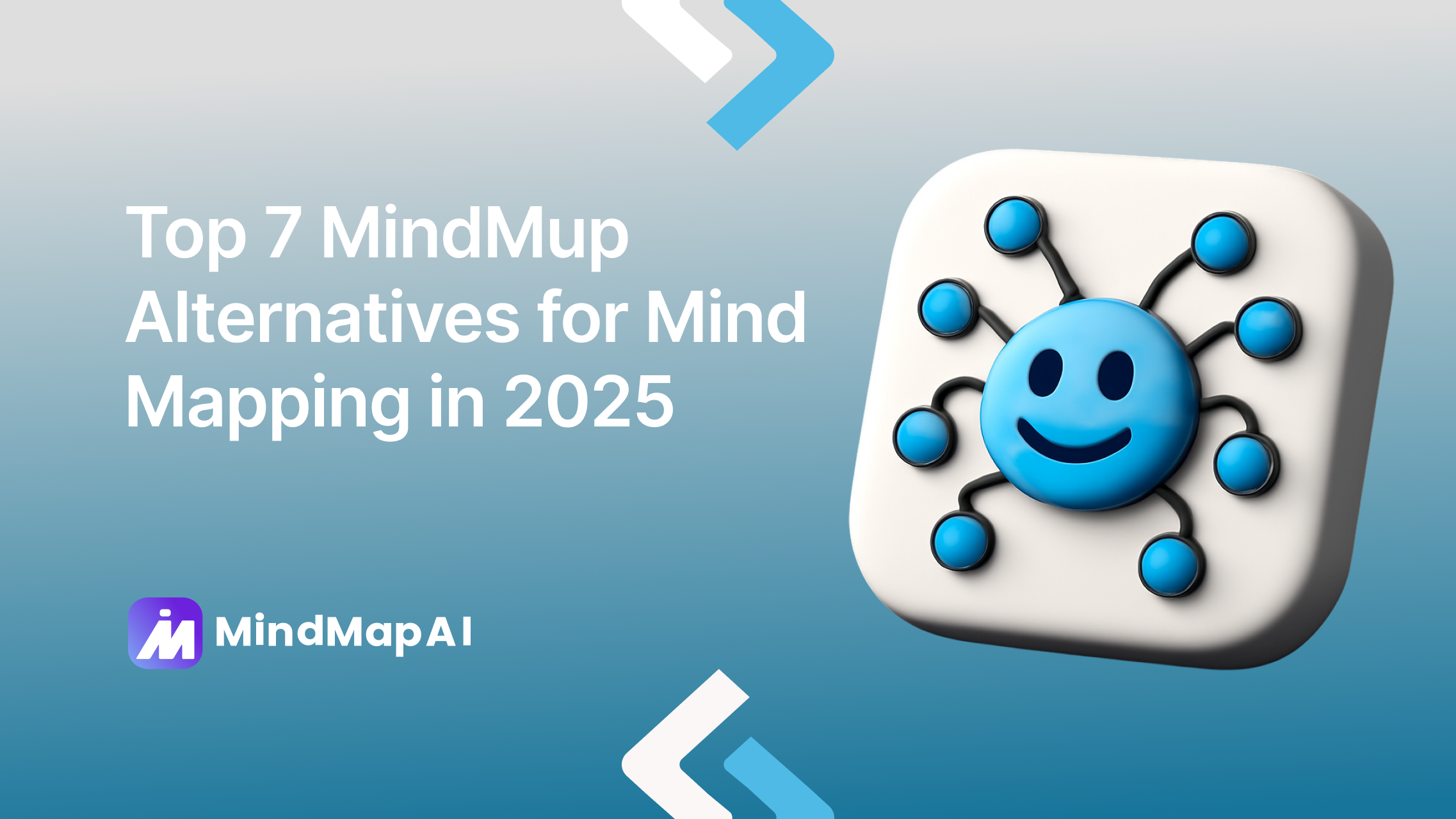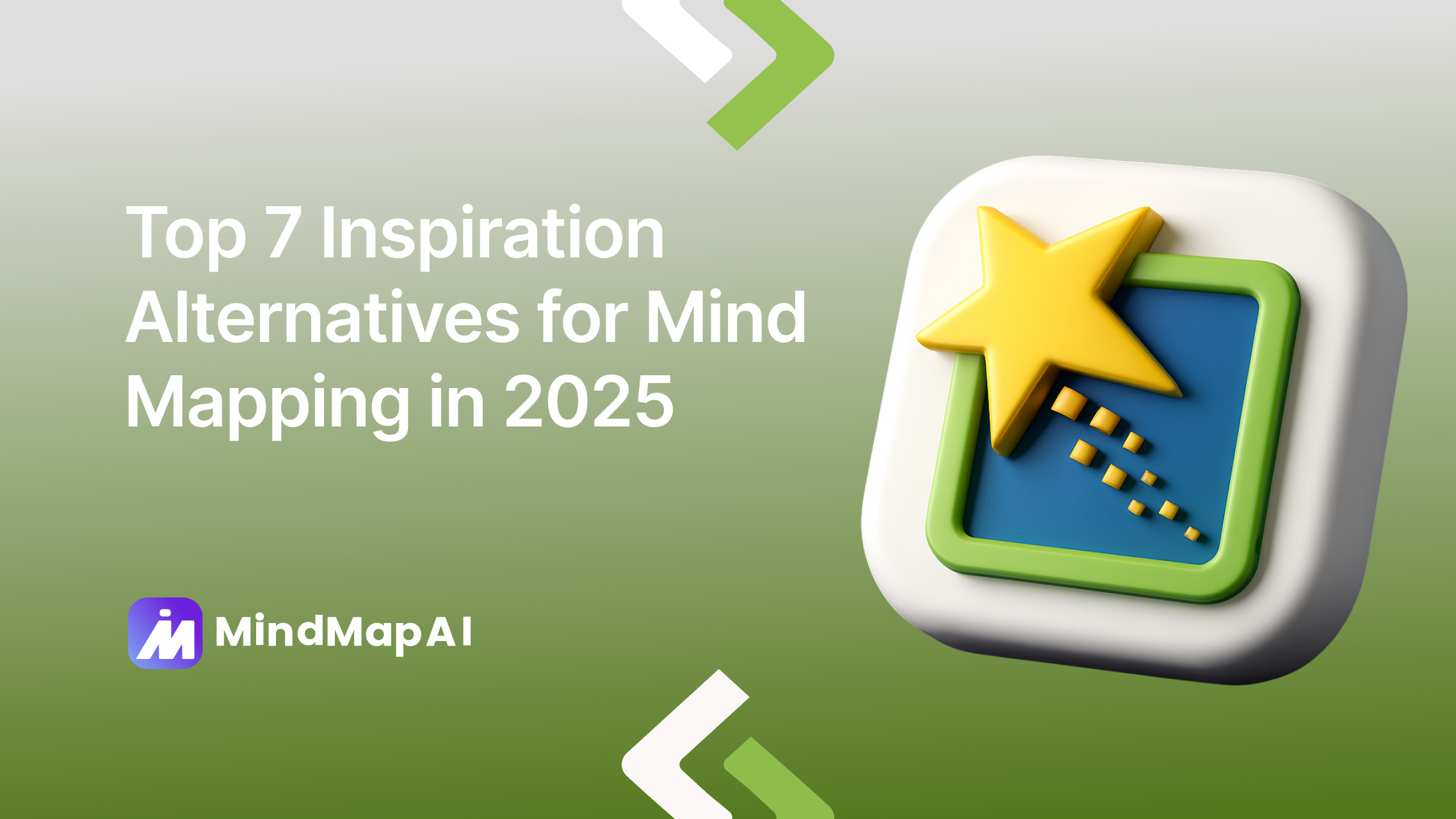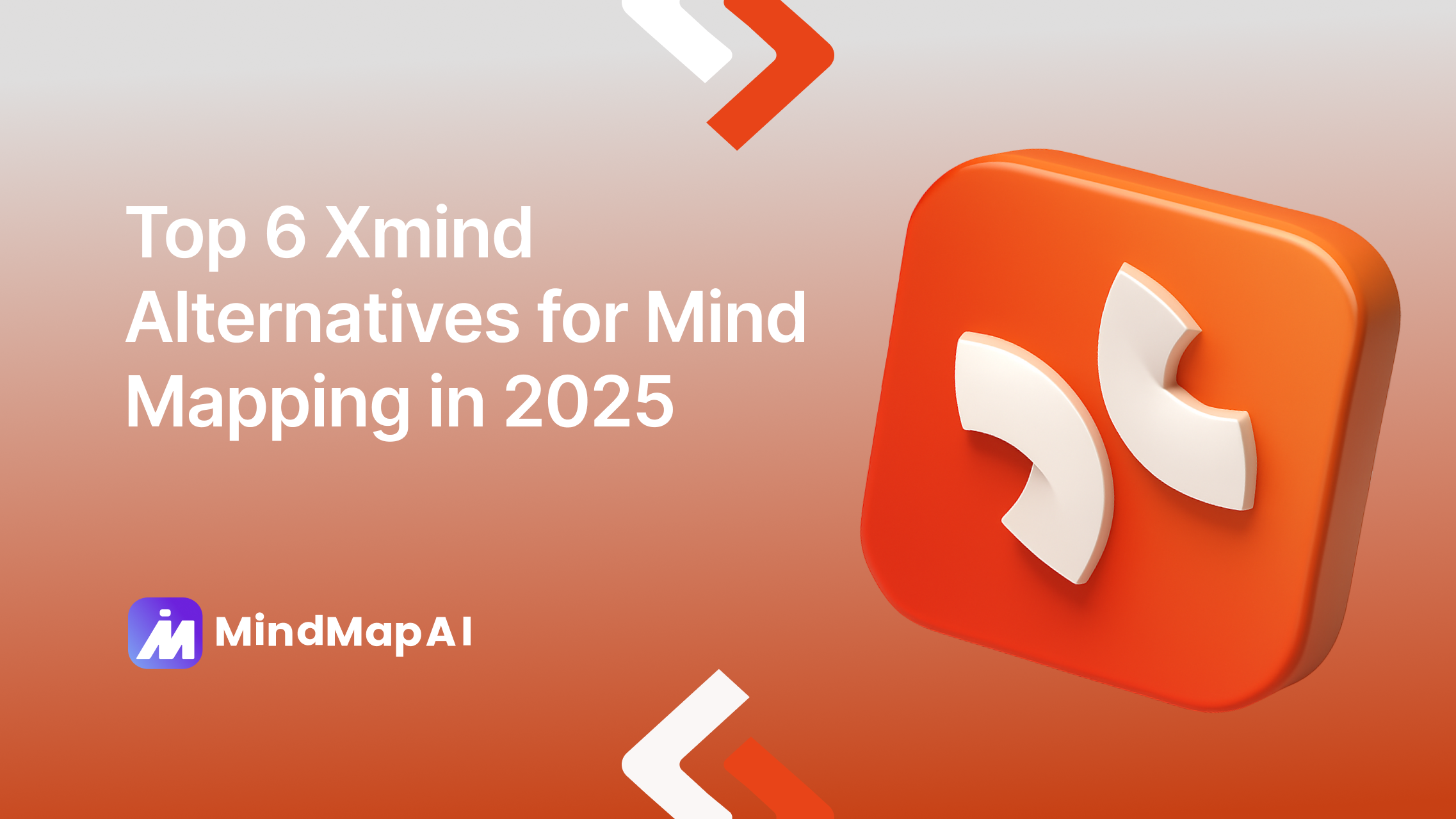
Top 6 Xmind Alternatives for Mind Mapping in 2025
Xmind is a polished, all-in-one thinking tool that takes you from brainstorming to structured plans with clean templates, multi-view layouts, and smooth collaboration across web, desktop, and mobile. It’s great for teams that value focus modes, presentation-ready maps, and a fast, reliable editing experience.
Still, every workflow is different. Some users want deeper AI assistance for instant content-to-map conversion, broader file ingest (PDFs, videos, audio, CSV), or finer control over automation and exports. Others need lighter tools for rapid ideation or platforms that lean harder into AI summarization, expansion, and on-canvas refinement.
This guide spotlights the best Xmind alternatives in 2025, options that blend powerful AI with flexible editing and collaboration, so you can capture ideas faster and turn them into action with less friction.
Turn your ideas into an AI mind map in seconds
1. MindMap AI

Why it stands out
MindMap AI is a powerful, AI-driven mind mapping software designed to make the mind mapping process faster, more intuitive, and incredibly flexible. Unlike traditional tools like Xmind, which rely on manual input and drag-and-drop workflows, MindMap AI instantly generates structured mind maps from a variety of file formats (PDFs, images, audio, video, CSV, text) in seconds. The AI Copilot Chat adds real-time interaction, allowing users to expand, summarize, and refine ideas using simple natural language commands. This, combined with Second-Order Connections that automatically reveal hidden relationships, makes MindMap AI ideal for researchers, project managers, and anyone looking for deep insights and faster brainstorming.
For those used to tools like Xmind, which require building maps branch by branch, MindMap AI offers a much faster, smarter, and more collaborative approach. The result is not only a tool for mind mapping, but an interactive thought partner that speeds up idea generation and brings clarity to complex concepts.
Key Features
Multi-format ingest: Supports PDFs, CSVs, images, audio, video, text, and more, turning them into structured mind maps instantly.

AI-powered Copilot Chat: Helps you expand, refine, or summarize content directly within the map using natural language commands.

Second-Order Connections: Automatically detects and links related ideas across your map, making it ideal for uncovering hidden patterns or gaps in your thinking.

Effortless sharing & exports: Export your mind maps as PNG, SVG, PDF, Markdown, or CSV, and share them via private or public links.

Pros
AI-powered automation: Mind map creation, summarization, and expansion.
Flexible input formats: Import from PDFs, CSVs, images, audio, video, and more.
No installation required: Accessible on any web browser or mobile device (iOS/Android).
Real-time AI chat: Direct, conversational editing of your map.
Lifetime plans available: For those who prefer a one-time payment instead of ongoing subscriptions.
Generous free plan: With 100 credits/month and full access to manual mind maps without watermarks.
Cons
No real-time collaboration: While sharing is available, multiple users cannot co-edit a map at the same time (yet).
Browser-first tool: There’s currently no desktop app for offline access, which might limit some users who need a completely offline solution.
Pricing
Free plan: 100 credits/month.
Basic: $7.49/month or $3.74/month (billed yearly, 2,000 credits).
Pro: $14.99/month or $7.49/month (billed yearly, 5,000 credits).
Lifetime tiers: Available starting at $129 (one-time payment).
2,000-credit add-on: $4.99.
Discover how MindMap AI stacks up against Xmind in features, pricing, and usability
2. MindMapper

Why it stands out
MindMapper is a classic Windows-based mind mapping tool that combines maps, dashboards, and planners in a single workspace. It’s designed for users who prefer structured planning without recurring subscription costs. With perpetual licenses and stable offline performance, it’s a strong choice for corporate environments or professionals who value one-time purchases over SaaS pricing.
Key Features
Integrated planner and dashboard views for structured project management.
Optimized for Windows desktop performance with perpetual license ownership.
Arena edition adds team collaboration features for enterprise use.
Pros
One-time purchase available across Standard, Pro, and Arena editions.
Well-suited to offline workflows and corporate Windows environments.
Cons
Windows-only, with no native macOS, Linux, or web apps.
Lacks built-in AI generation features.
Traditional interface feels dated compared to newer AI-first apps.
Pricing
Standard at $100 (perpetual license).
Pro at $120 (perpetual license).
Arena at $249 (perpetual license, includes team collaboration).
3. Novamind
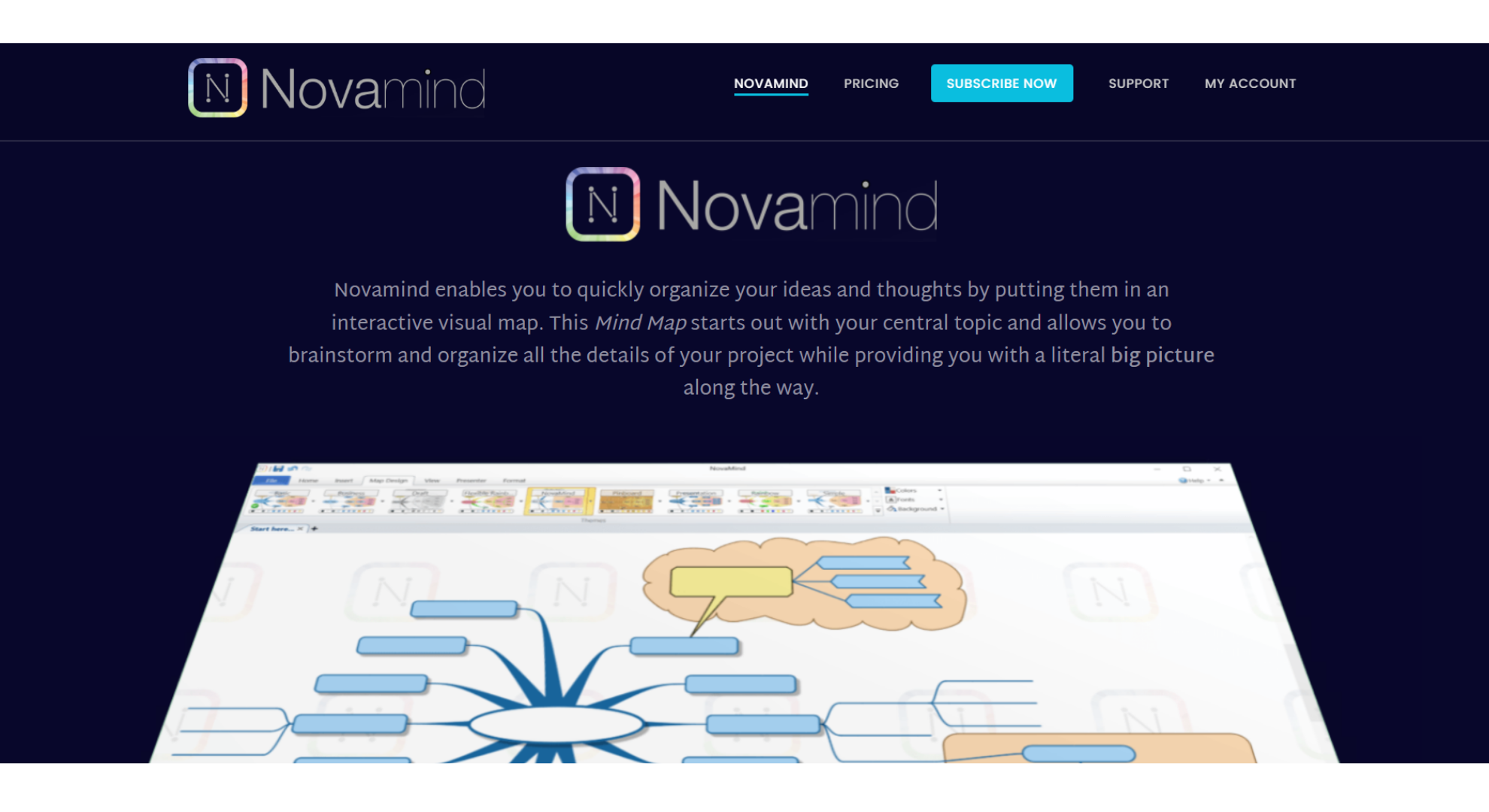
Why it stands out
Novamind is a veteran desktop-based mind mapping tool known for its quick, visual organization. While it no longer offers cloud services, it remains a solid option for users who want a lightweight, offline tool for brainstorming or outlining ideas. It’s particularly useful on legacy systems where newer AI-driven apps may not run smoothly.
Key Features
Straightforward map-building with a built-in presentation mode.
Downloadable installers for Windows and older macOS versions (10.9–10.14).
Pros
Simple, distraction-free mapping without subscription costs.
Still works well on legacy machines that need a stable offline tool.
Cons
Cloud services have been discontinued.
Limited macOS support (restricted to versions 10.9–10.14).
No built-in generative AI capabilities.
Pricing
Downloadable desktop app available from the official site.
No current cloud pricing listed.
4. VisualMind
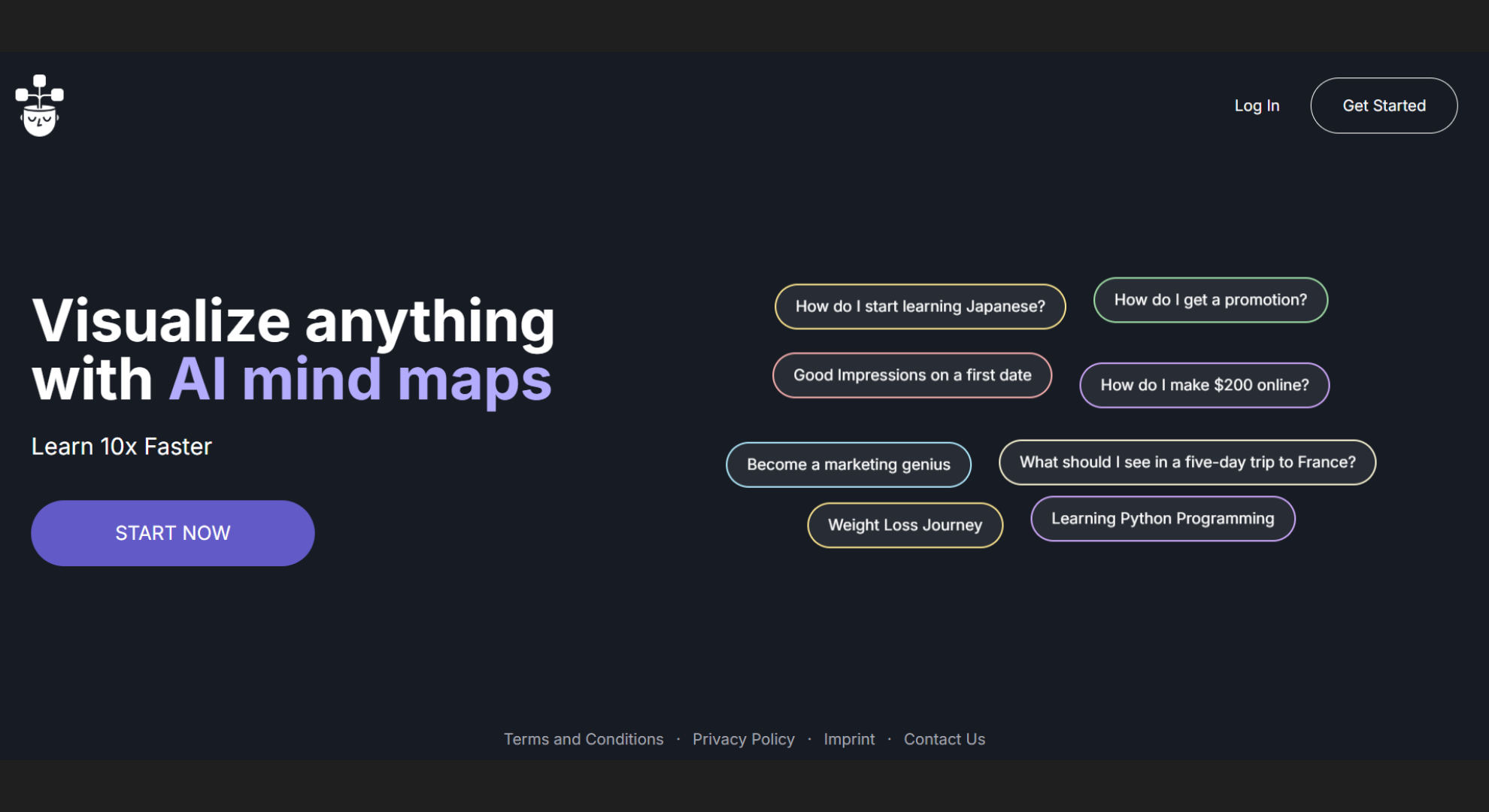
Why it stands out
VisualMind focuses on fun, fast idea generation with chat-to-map workflows and the ability to turn YouTube videos into mind maps. This makes it especially appealing for students and casual learners who want quick visual outlines without spending time on manual structuring. With iOS and Android apps available, it’s also easy to use on the go.
Key Features
Prompt any topic to generate an instant, color-coded map.
Convert YouTube videos into outlines, then refine the map through chat.
Mobile apps for iOS and Android for portable mapping.
Pros
No design skills required; maps are auto-formatted.
Very short learning curve, making it great for students.
Cons
Feature set is still evolving, with only basic export and project management options.
Pricing varies depending on platform, with in-app purchases on mobile.
Pricing
Mobile apps with in-app purchases on iOS and Android.
Web app available with details listed on the official site.
5. Coggle
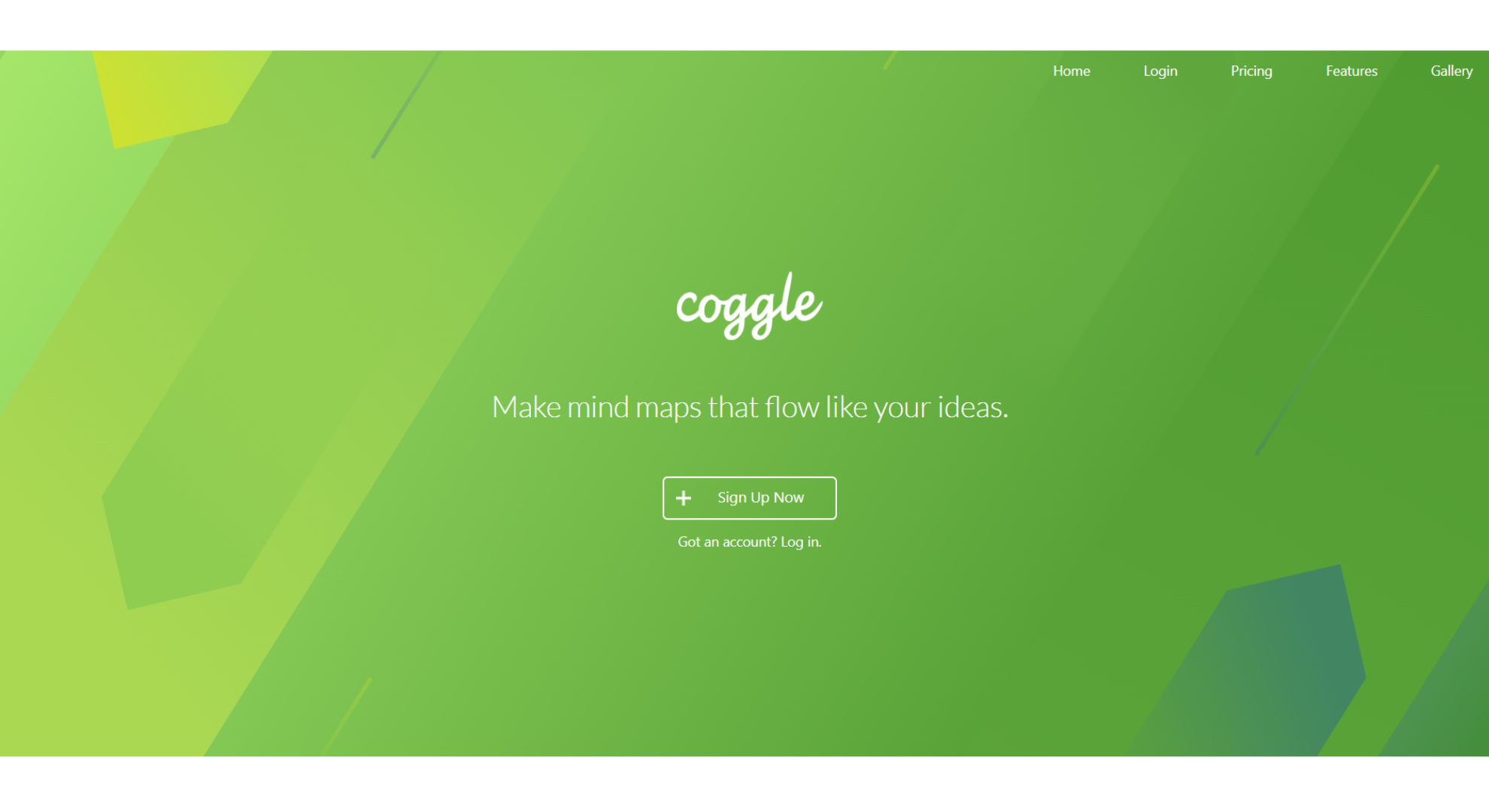
Why it stands out
Coggle is a real-time collaboration tool that makes it easy to share and edit diagrams with others, even without requiring a login on its Awesome plan. It’s a favorite for group brainstorming sessions and quick visual idea-sharing, with straightforward link-based access and affordable team options.
Key Features
Unlimited public diagrams, with private diagrams available on paid tiers.
Full change history, multiple starting points, and shared folders for organization.
Team features with organizational controls such as SAML SSO.
Pros
Simple and fast for group brainstorming and collaborative mapping.
Affordable team plan with admin and security controls.
Cons
No built-in AI generation features.
Lacks advanced project management or reporting tools.
Pricing
Awesome plan at $5/month.
Organisation plan at $8/member/month.
6. MindNode
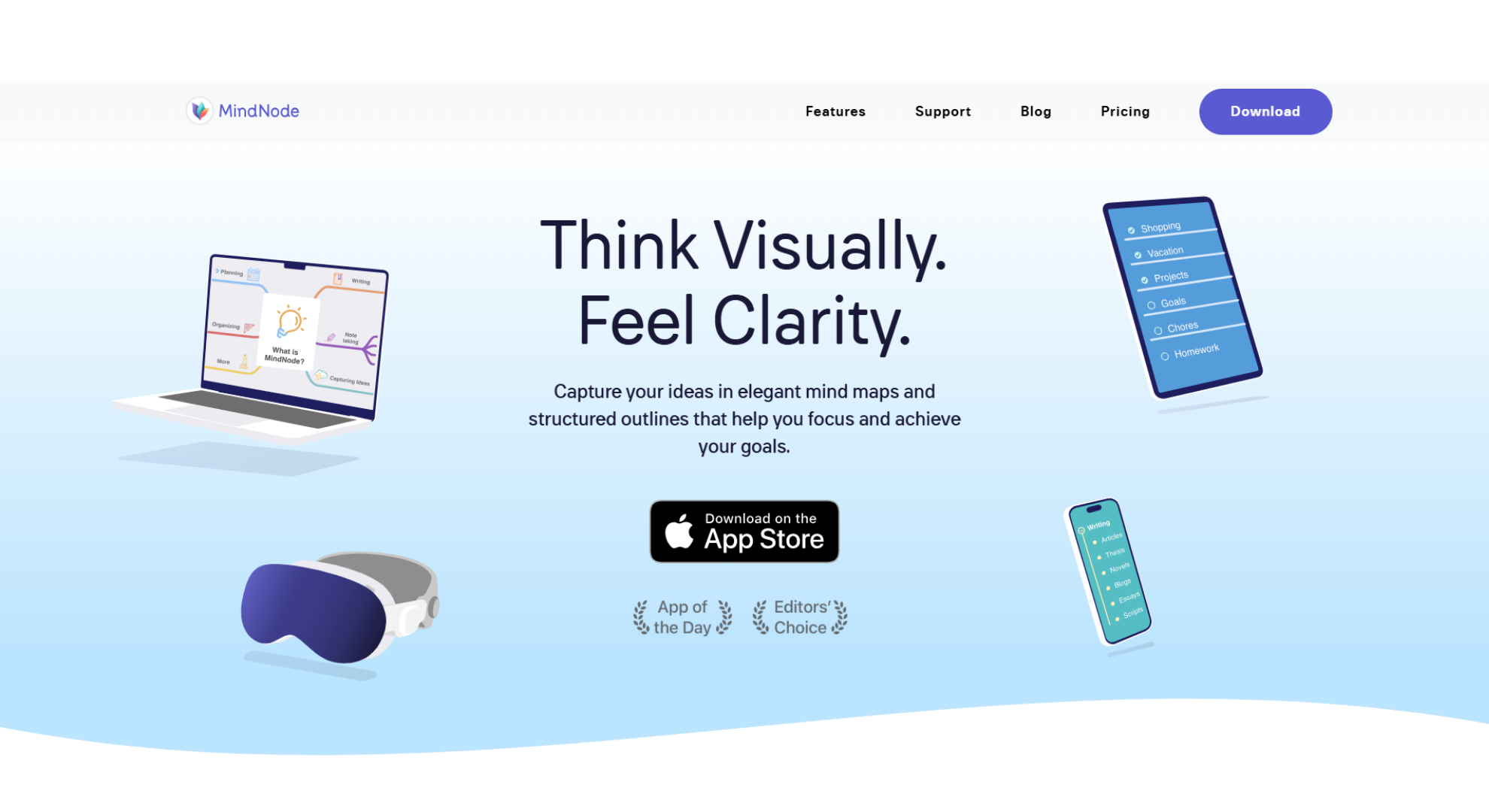
Why it stands out
MindNode is an elegant, Apple-only mind mapping app designed for macOS and iOS users. It offers a seamless Outline ↔ Map workflow, making it especially appealing to writers and thinkers who like to shift between structured text and visual maps. With features like Focus Mode, Visual Tags, and Quick Entry (available with the Plus subscription), it provides a distraction-free environment for idea development.
Key Features
Visual Tags, Focus Mode, and Quick Entry (Plus subscription).
Tight integration with the Apple ecosystem through iCloud sync.
Pros
Beautiful, minimalist design for a distraction-free experience.
Excellent outline integration, making it perfect for writers.
Cons
Apple-only platform with no Windows, Android, or web support.
No native AI generation features.
Full functionality requires a subscription.
Pricing
MindNode Plus subscription available with monthly and yearly plans.
App Store currently lists pricing around $3.99/month or $29.99/year (region-dependent).
Free trial available.
Find the perfect match for your workflow
Comparison at a Glance
| Tool | Entry price | Included AI quota | Stand-out strength |
|---|---|---|---|
| MindMap AI | From $3.74/mo (yearly) | 2,000–5,000 credits/mo | Multi-format ingest + Copilot Chat. |
| MindMapper | $100 one-time (Standard) | – | Desktop map + planner workflow. |
| Novamind | Download (legacy desktop) | – | Simple offline mapping; legacy support. |
| VisualMind | Mobile IAPs (varies) | Yes (AI-first) | Chat-to-map & YouTube-to-map. |
| Coggle | $5/mo (Awesome) | – | Real-time, no-login collaboration. |
| MindNode | ~$3.99/mo or ~$29.99/yr | – | Apple-centric map ↔ outline. |
FAQ
Q: Why should I look for Xmind alternatives in 2025?
A: Xmind is a polished tool with classic structures like fishbone, matrix, and timeline, but its entry-level plans limit AI credits, collaboration, and presentation features. If you need larger AI quotas, faster file-to-map conversion, or deeper scheduling options, alternatives like MindMap AI provide more flexibility and power.
Q: How does MindMapper compare to Xmind?
A: MindMapper is a strong Windows-based option for offline planners who prefer one-time licenses. However, it lacks AI features and modern web or mobile support. MindMap AI, on the other hand, gives you AI-driven expansions, summaries, and real-time reshaping of maps in the browser, with flexible subscription or lifetime credit options.
Q: Is MindNode a good alternative for Apple users?
A: Yes, MindNode is elegant and tightly integrated with macOS and iOS, making it perfect for writers. However, it lacks AI-driven generation and cross-platform access. MindMap AI is browser-based, working across all devices, and adds AI-powered expansions and file imports to speed up workflows.
Q: Which Xmind alternative gives the best value for money?
A: MindMap AI stands out for its generous AI quotas (2,000–5,000 credits monthly), lifetime plans, and multi-format ingestion; all at affordable prices starting from $3.74/month (yearly billing). Compared to Xmind’s limited free credits and locked features, MindMap AI provides better long-term value for students, professionals, and teams.
Final Takeaway
Xmind delivers a refined mapping experience with proven reliability, but if you’re after more AI depth, wider format support, or faster idea-to-output workflows, the top Xmind alternatives are well worth exploring.
MindMap AI is a standout: drop in PDFs, videos, audio, images, or text and get an editable mind map in seconds. Use AI Expand, Summarize, and Focus Topic to explore or condense ideas, then export to PNG, SVG, PDF, Markdown, or CSV and share instantly. It’s a flexible upgrade for students, creators, and teams who want automation without losing control.





